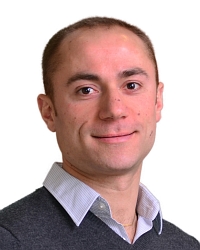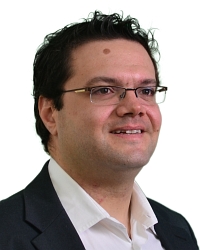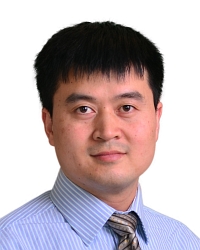TR2018-055
Sparse Blind Deconvolution for Distributed Radar Autofocus Imaging
-
- , "Sparse Blind Deconvolution for Distributed Radar Autofocus Imaging", arXiv, July 2018.
-
MERL Contacts:
-
Research Areas:
Abstract:
A common problem that arises in radar imaging systems, especially those mounted on mobile platforms, is antenna position ambiguity. Approaches to resolve this ambiguity and correct position errors are generally known as radar autofocus. Common techniques that attempt to resolve the antenna ambiguity generally assume an unknown gain and phase error afflicting the radar measurements. However, ensuring identifiability and tractability of the unknown error imposes strict restrictions on the allowable antenna perturbations. Furthermore, these techniques are often not applicable in near-field imaging, where mapping the position ambiguity to phase errors breaks down. In this paper, we propose an alternate formulation where the position error of each antenna is mapped to a spatial shift operator in the image-domain. Thus, the radar autofocus problem becomes a multichannel blind deconvolution problem, in which the radar measurements correspond to observations of a static radar image that is convolved with the spatial shift kernel associated with each antenna. To solve the reformulated problem, we also develop a block coordinate descent framework that leverages the sparsity and piece-wise smoothness of the radar scene, as well as the one-sparse property of the two dimensional shift kernels. We evaluate the performance of our approach using both simulated and experimental radar measurements, and demonstrate its superior performance compared to state-of-the art methods.
Related Video
Related Publications
- @article{Mansour2018dec,
- author = {Mansour, Hassan and Liu, Dehong and Kamilov, Ulugbek and Boufounos, Petros T.},
- title = {Sparse Blind Deconvolution for Distributed Radar Autofocus Imaging},
- journal = {IEEE Transactions on Computational Imaging},
- year = 2018,
- volume = 4,
- number = 4,
- pages = {537--551},
- month = dec,
- doi = {10.1109/TCI.2018.2875375},
- url = {https://www.merl.com/publications/TR2018-179}
- }
- @inproceedings{Mansour2018apr,
- author = {Mansour, Hassan and Kamilov, Ulugbek S. and Liu, Dehong and Boufounos, Petros T.},
- title = {Radar Autofocus Using Sparse Blind Deconvolution},
- booktitle = {IEEE International Conference on Acoustics, Speech, and Signal Processing (ICASSP)},
- year = 2018,
- pages = {1623--1627},
- month = apr,
- doi = {10.1109/ICASSP.2018.8462402},
- url = {https://www.merl.com/publications/TR2018-003}
- }


